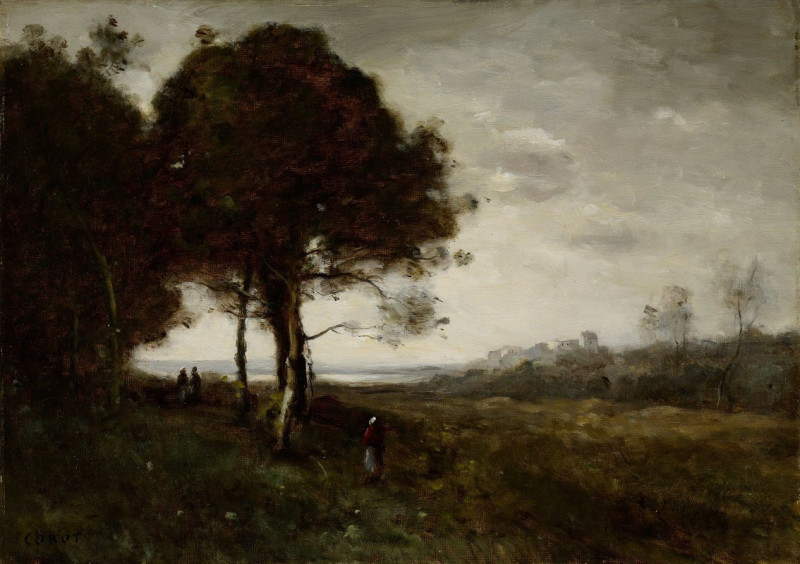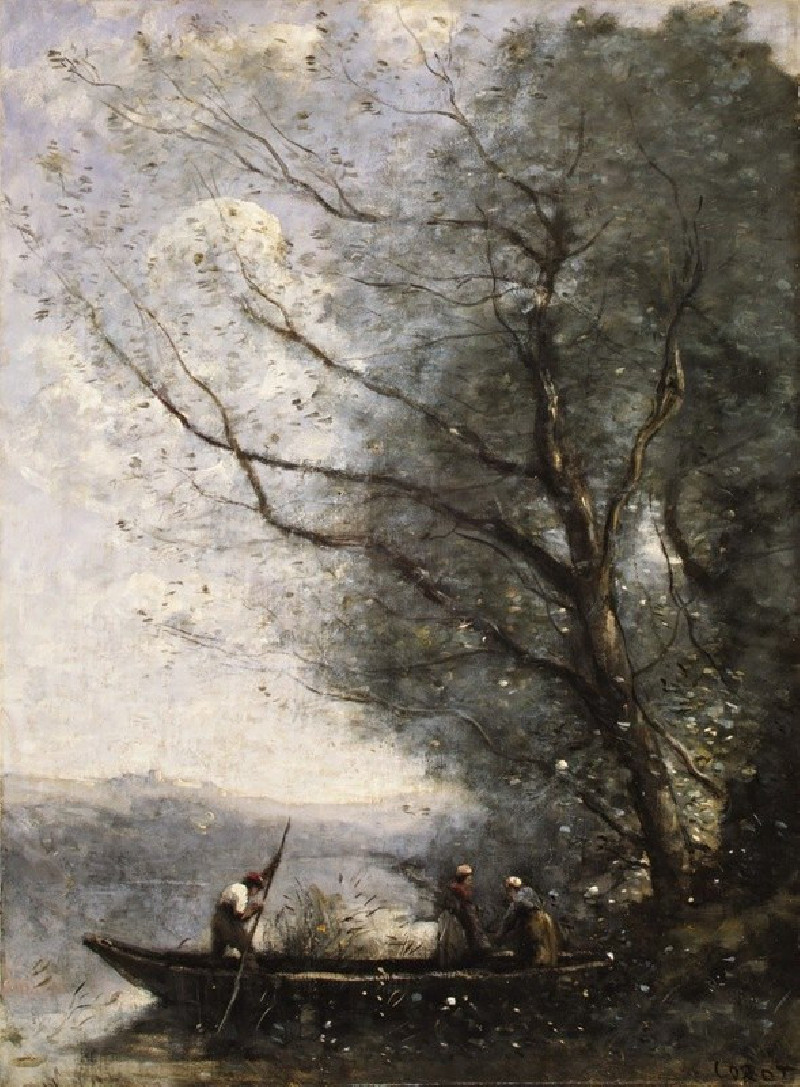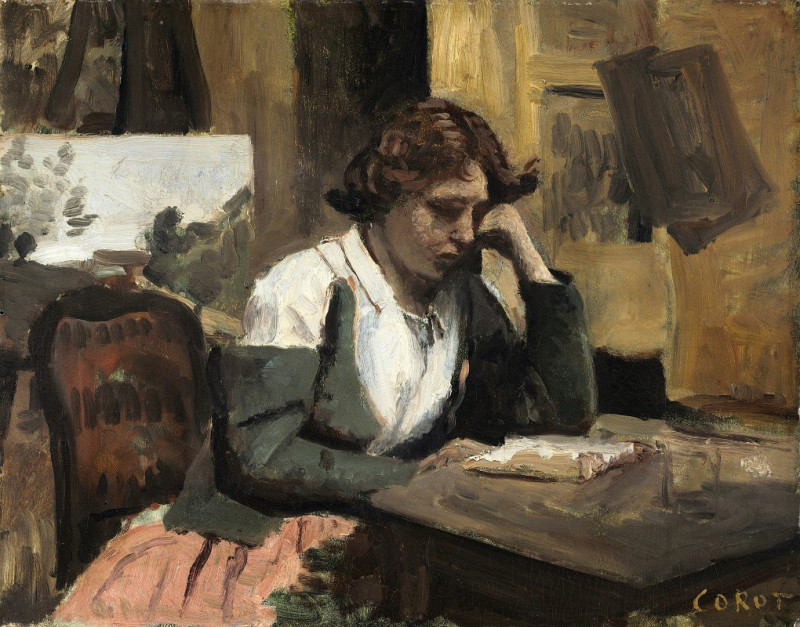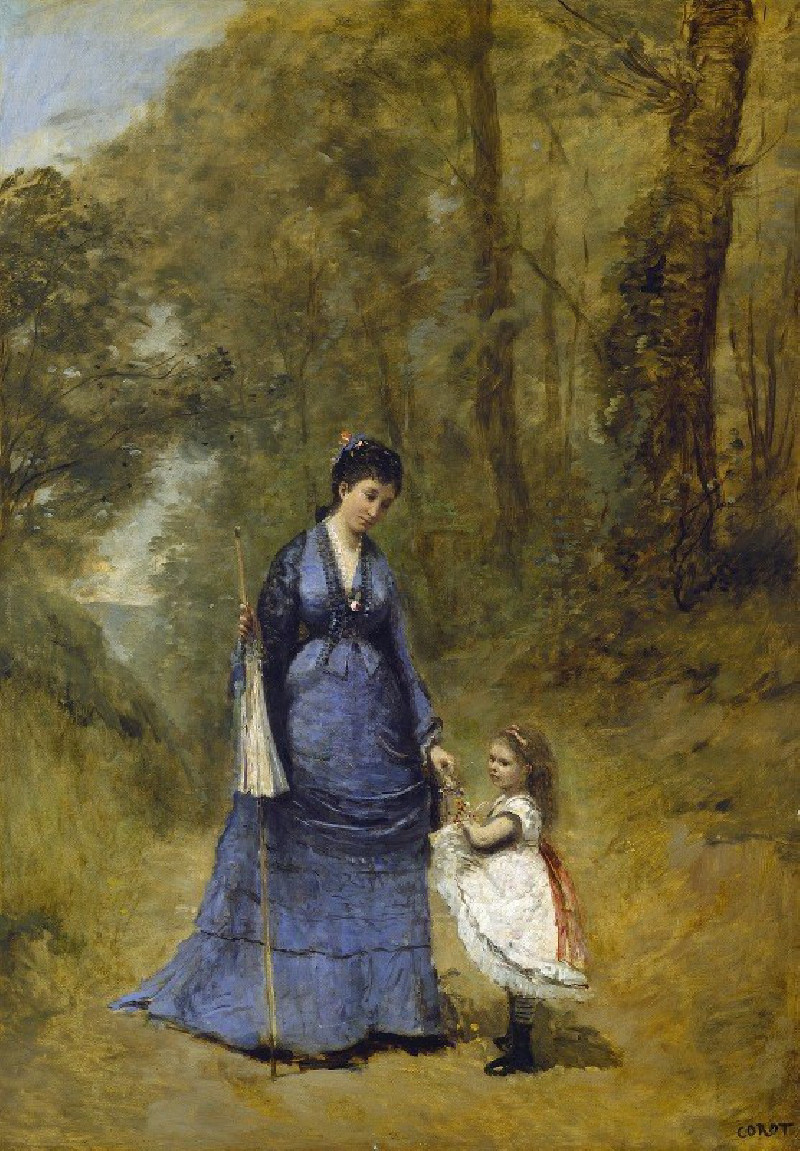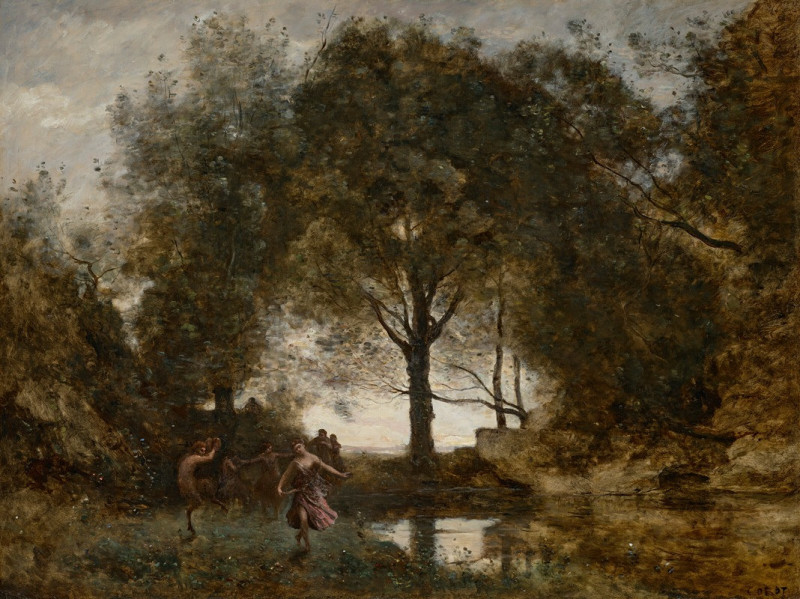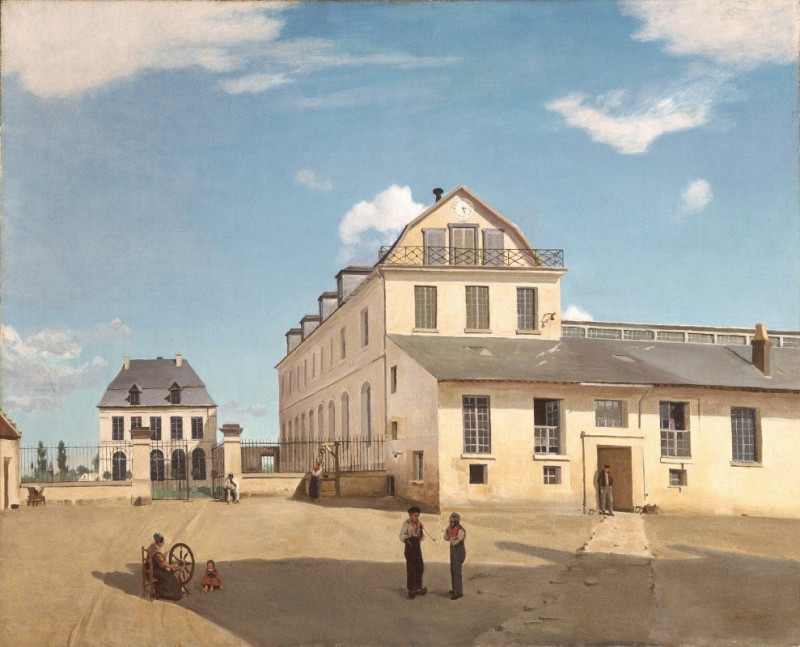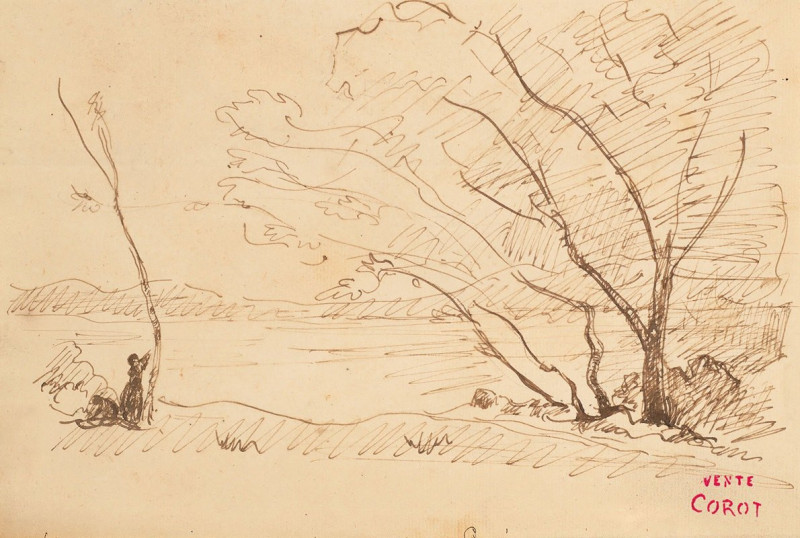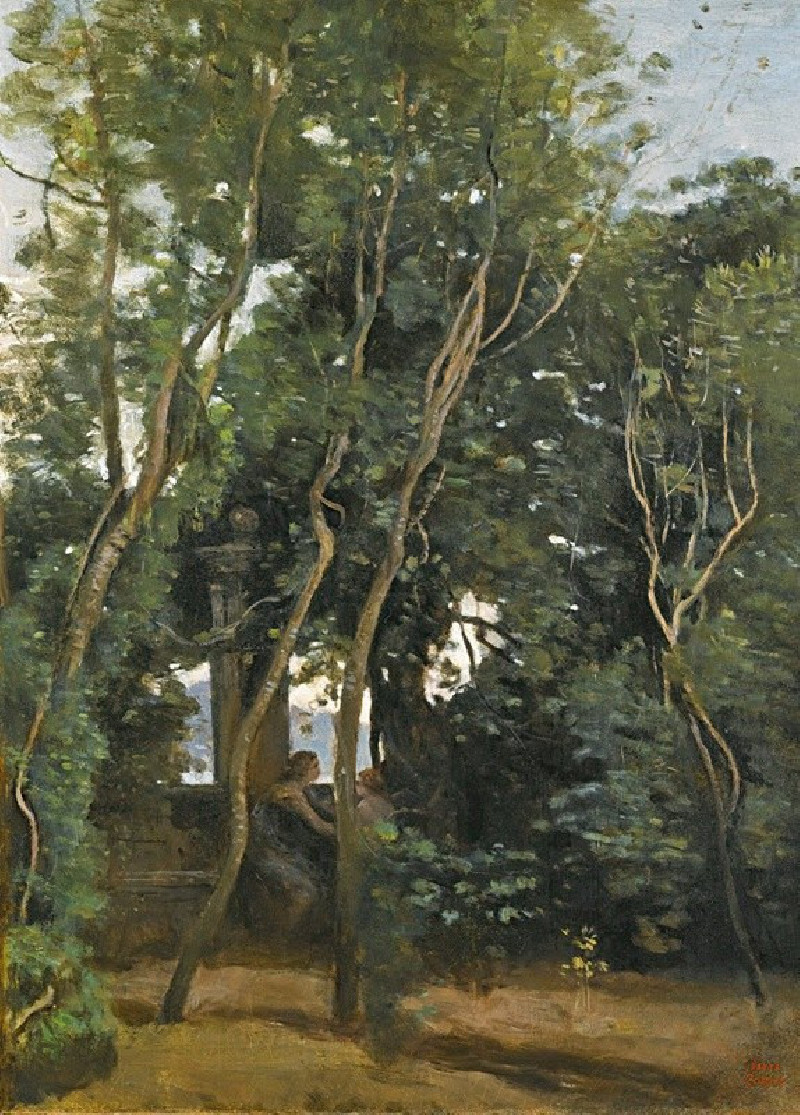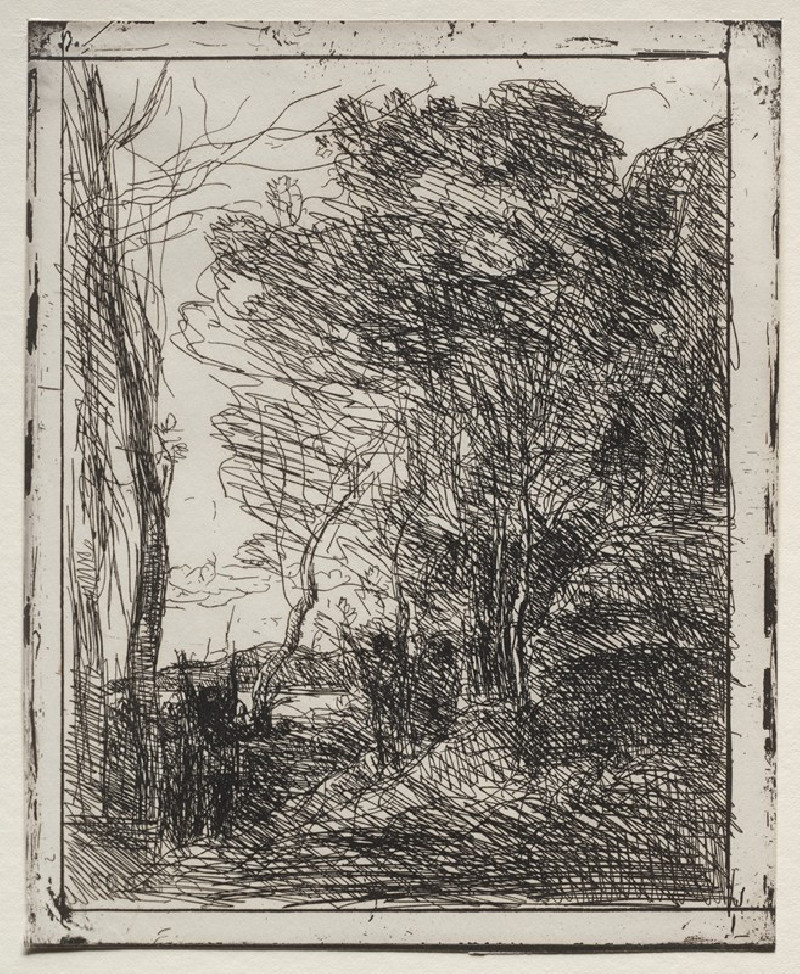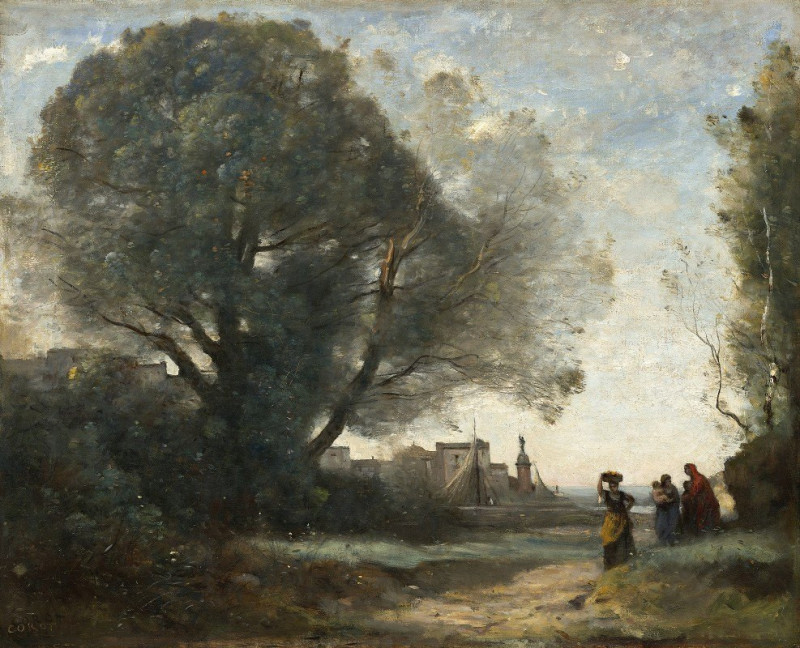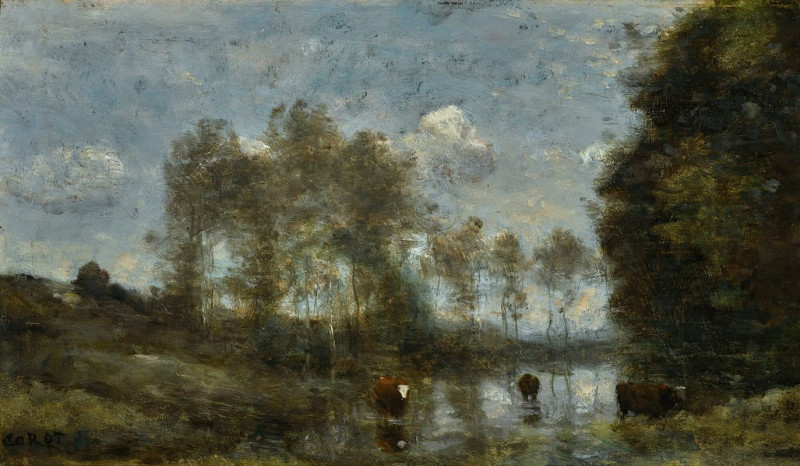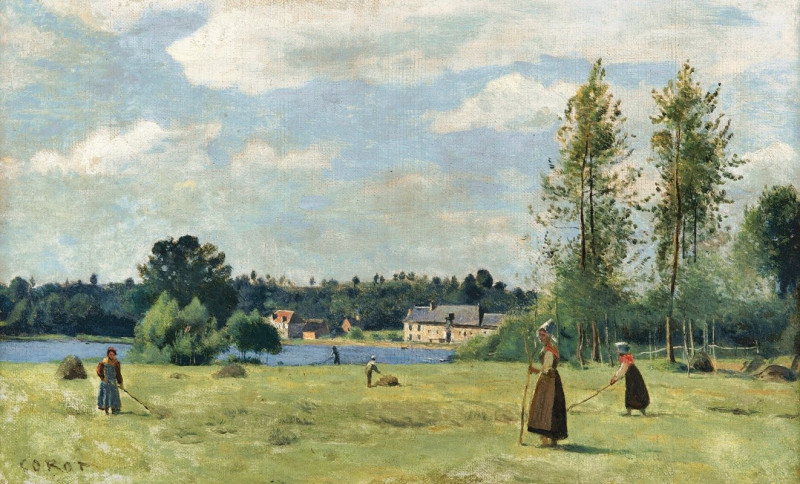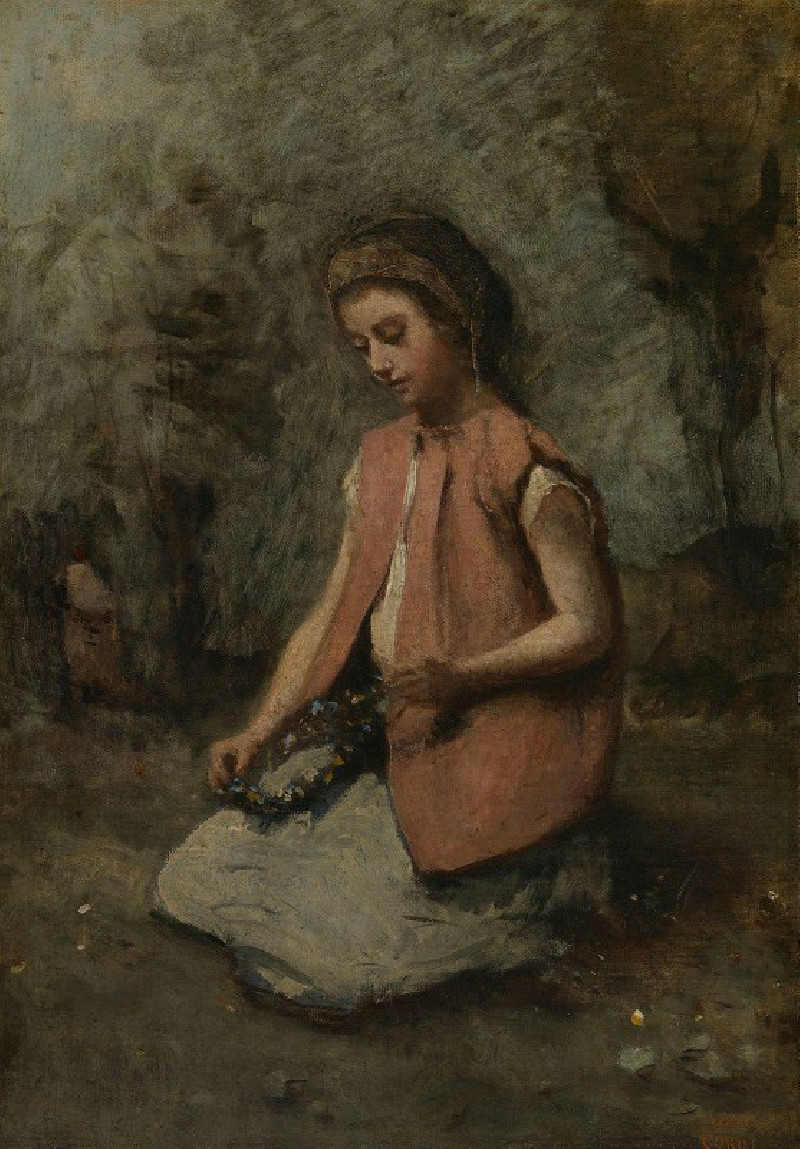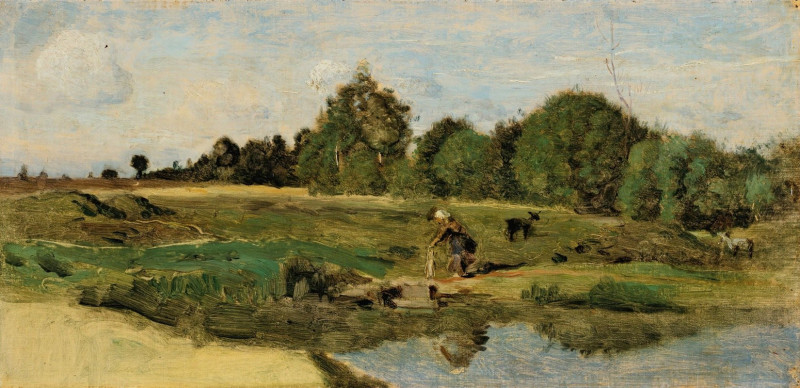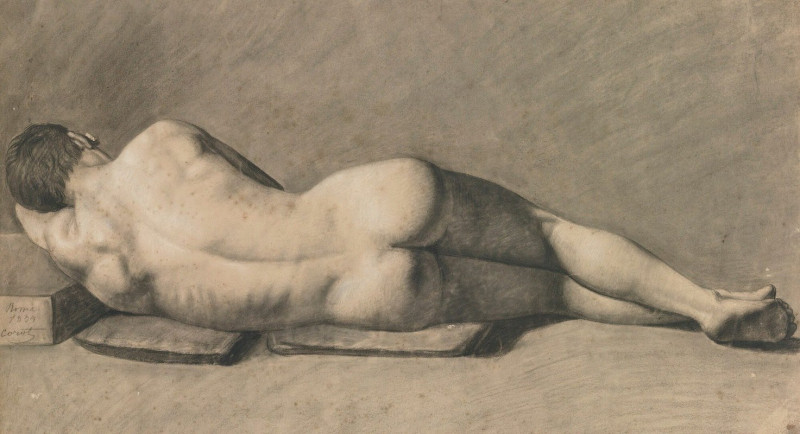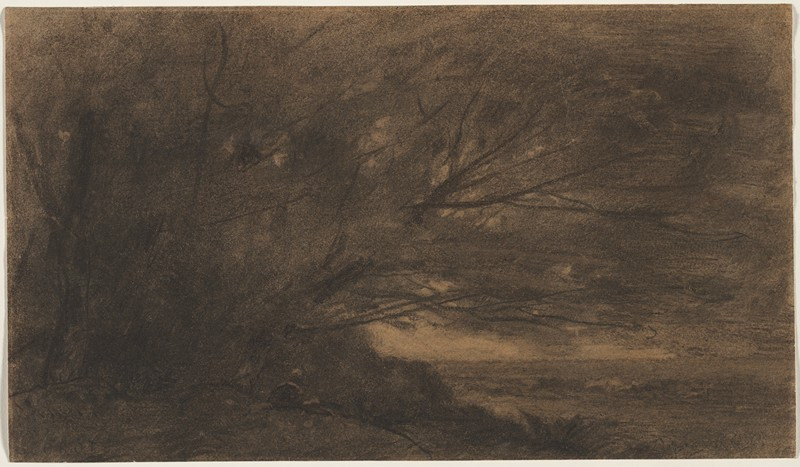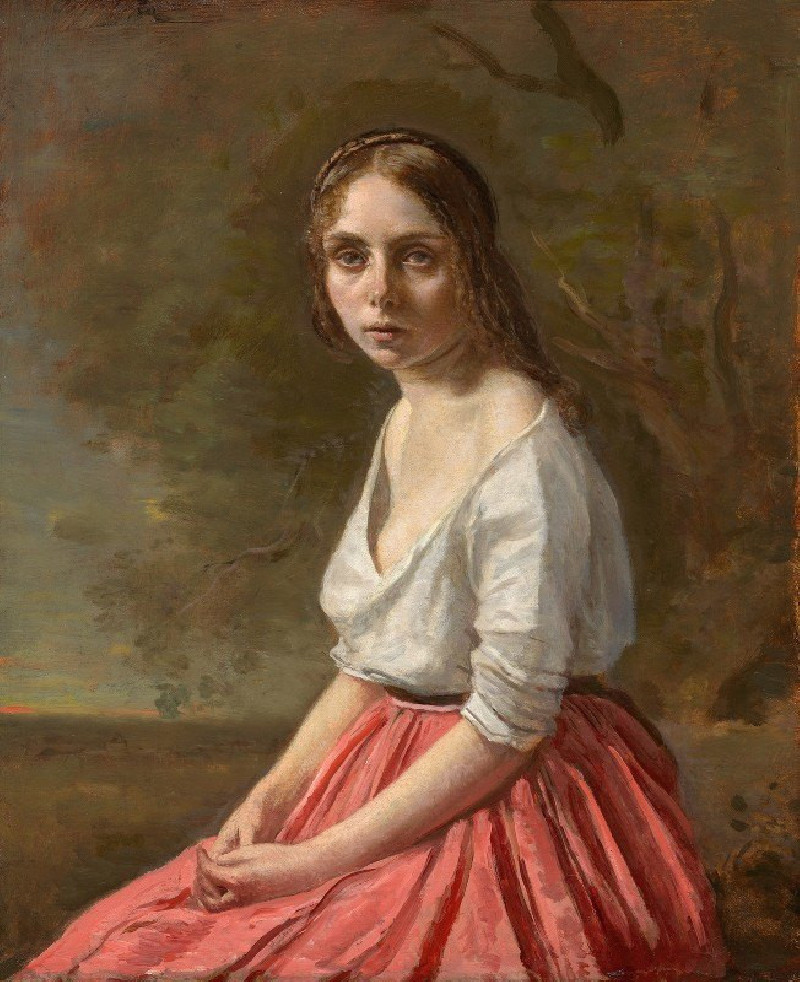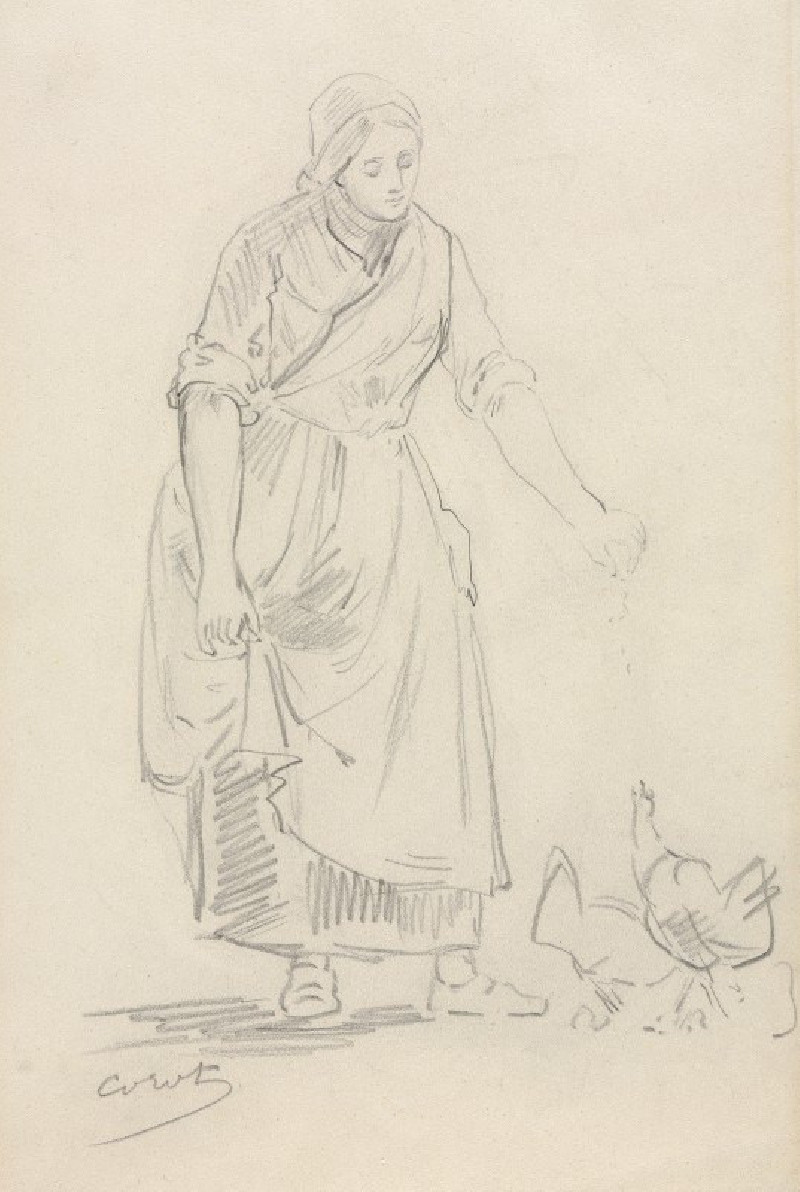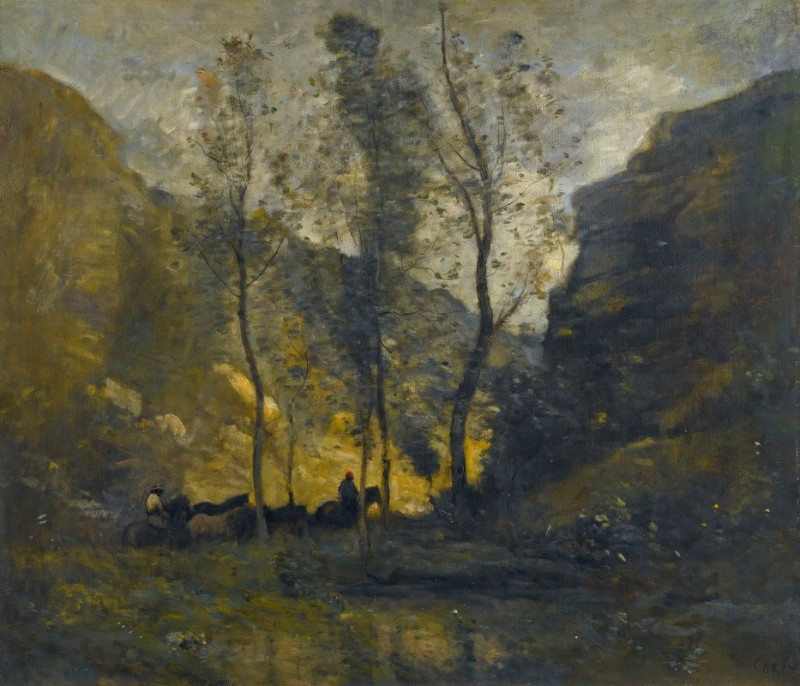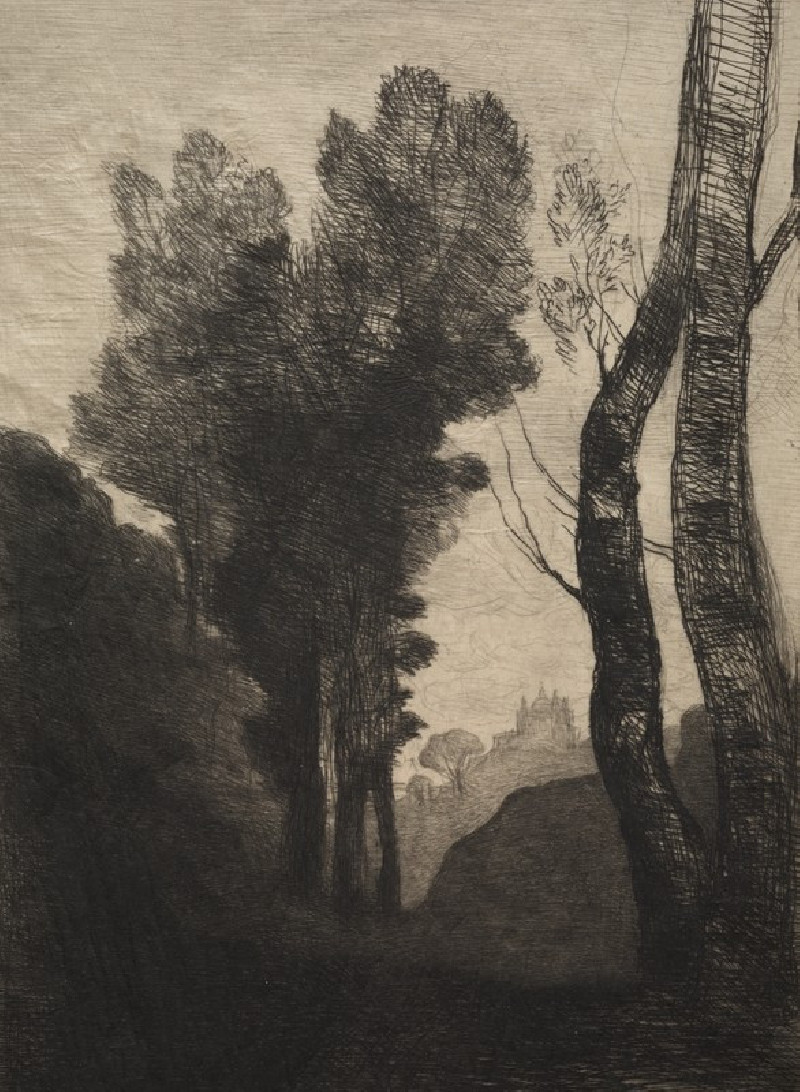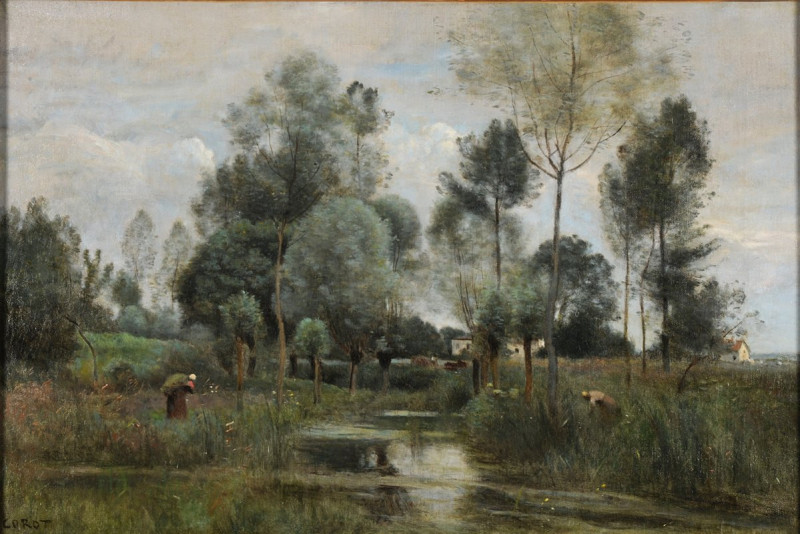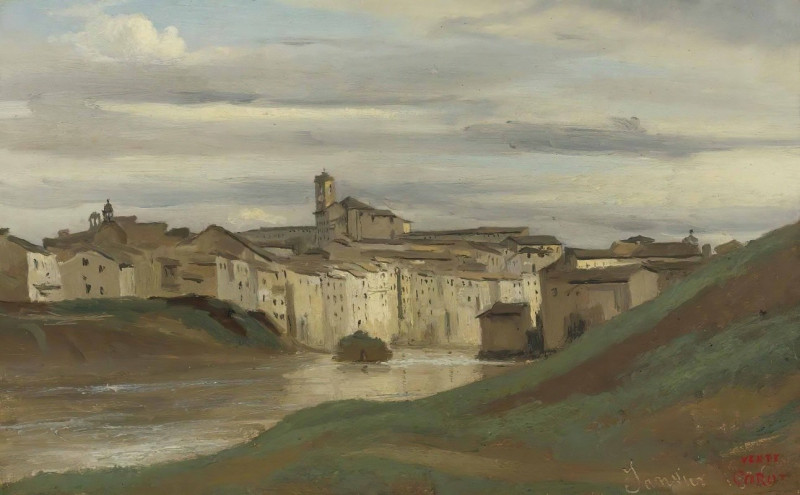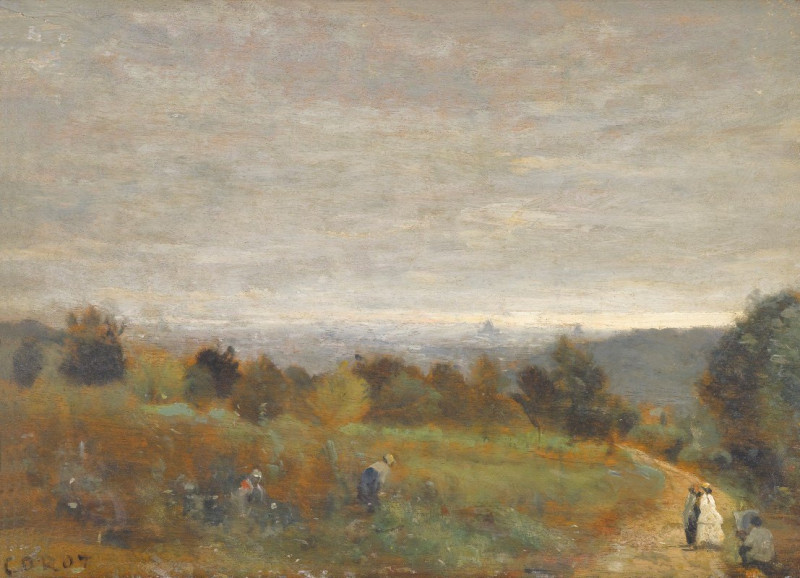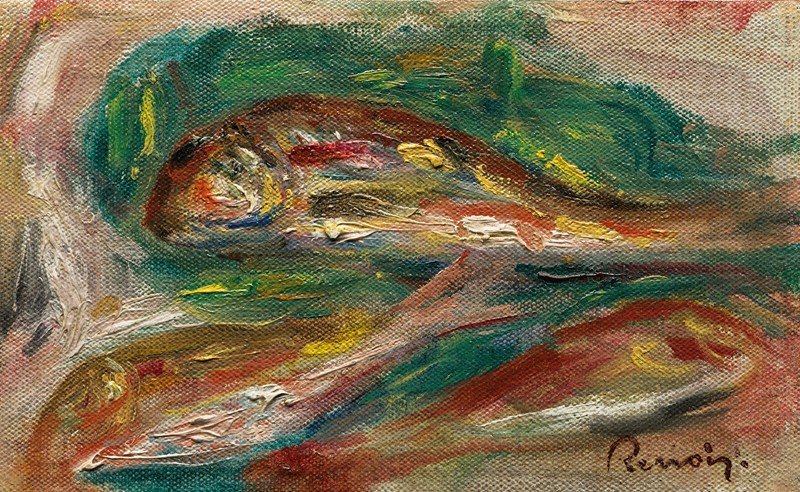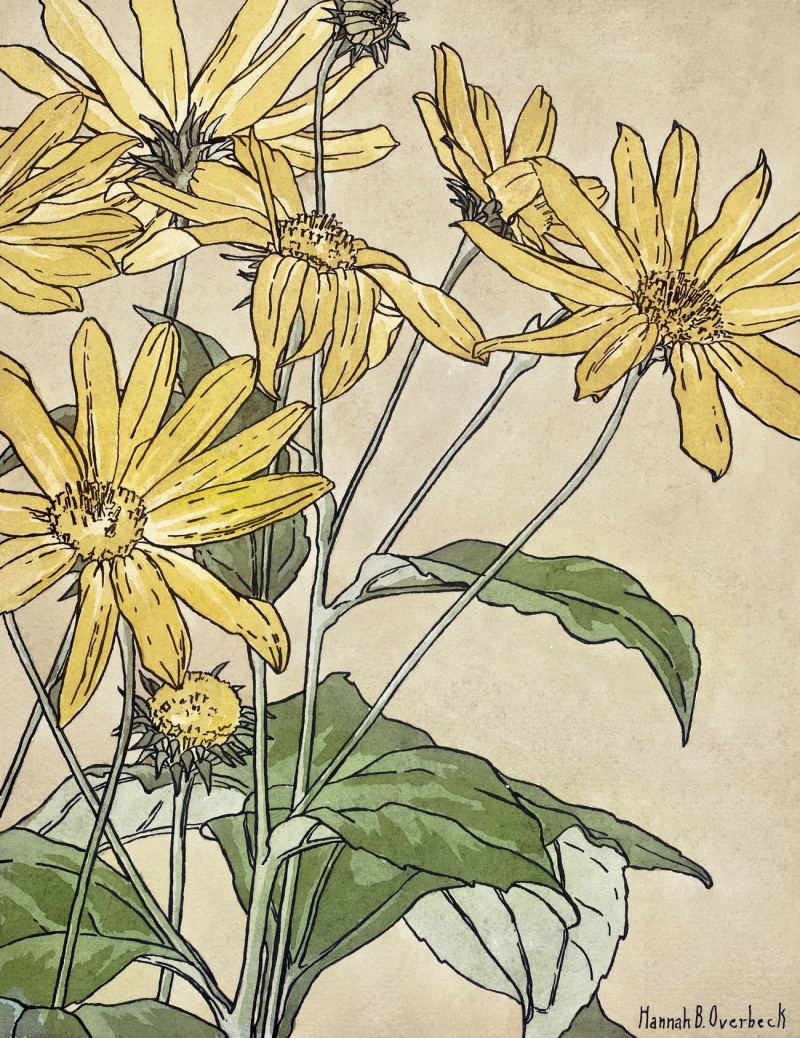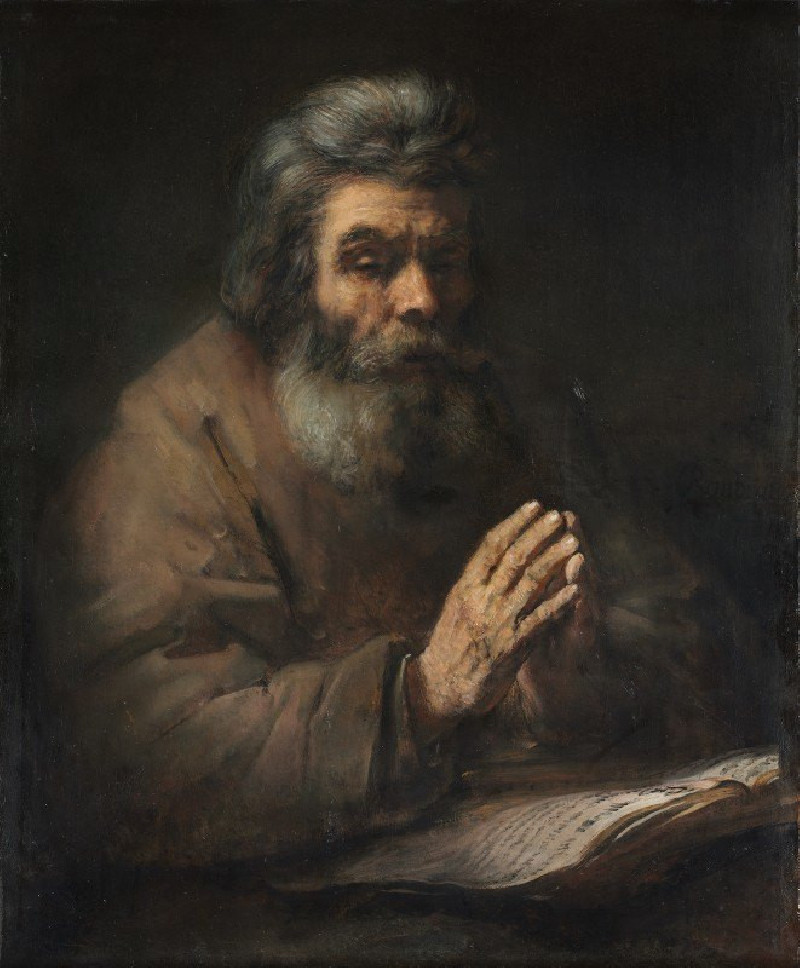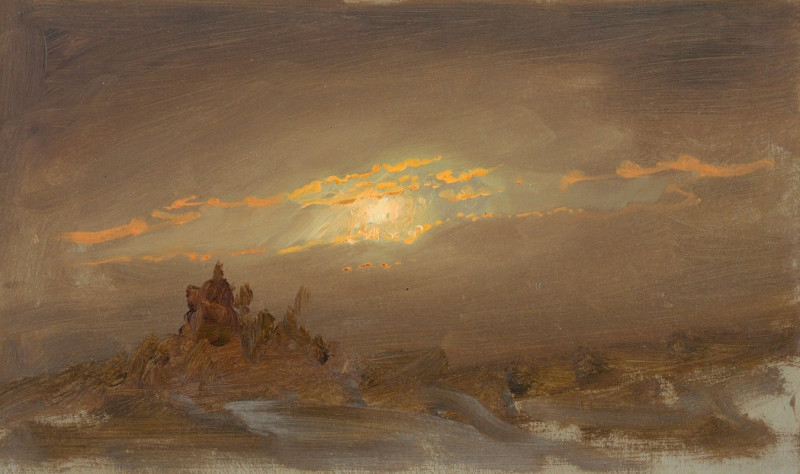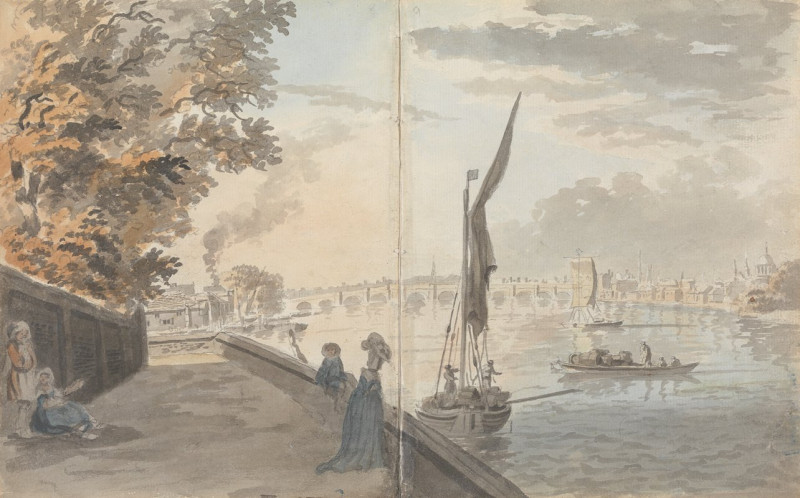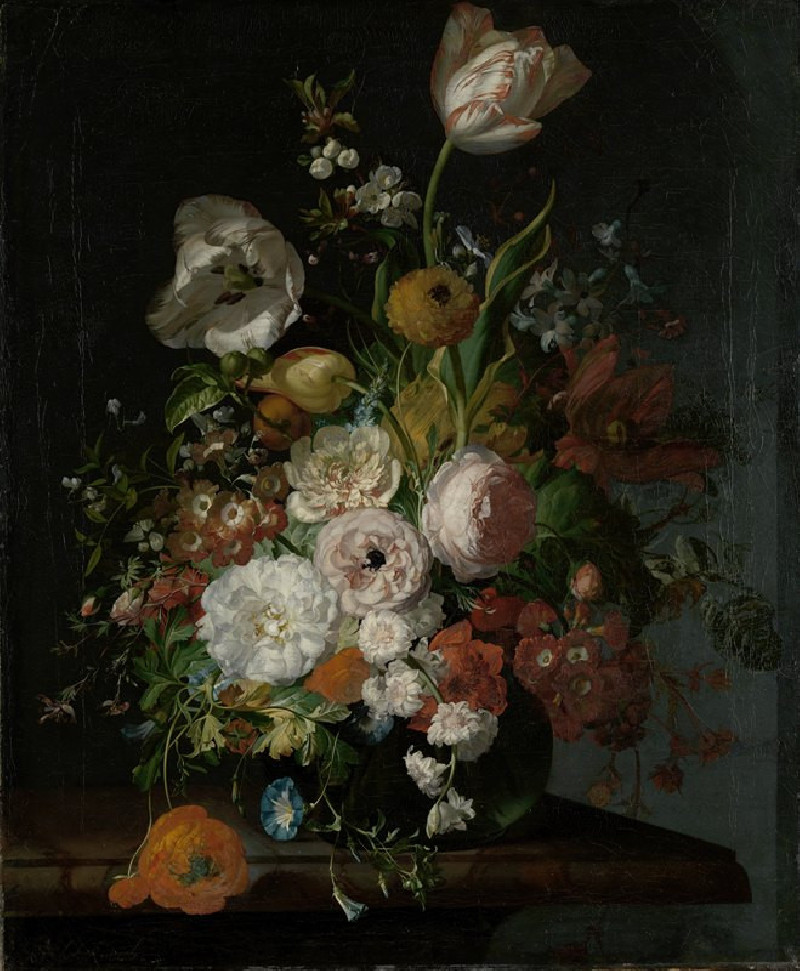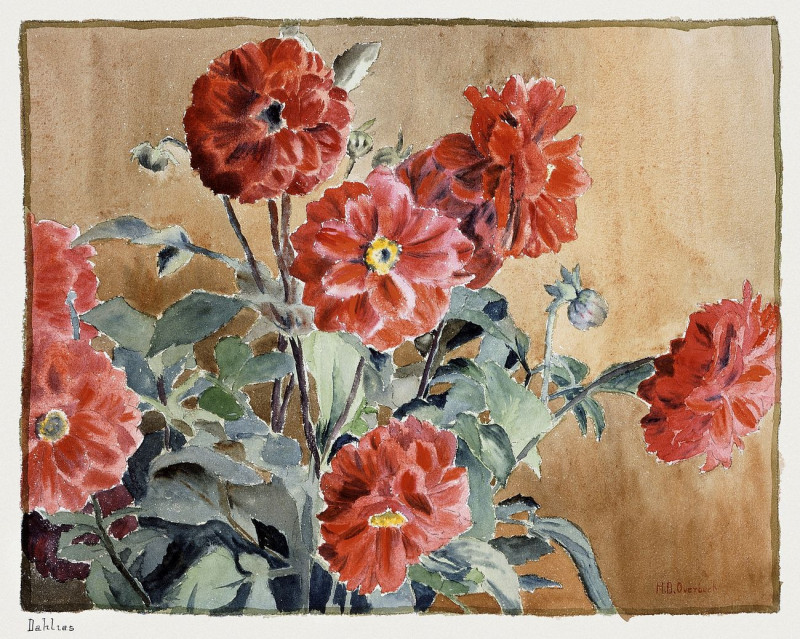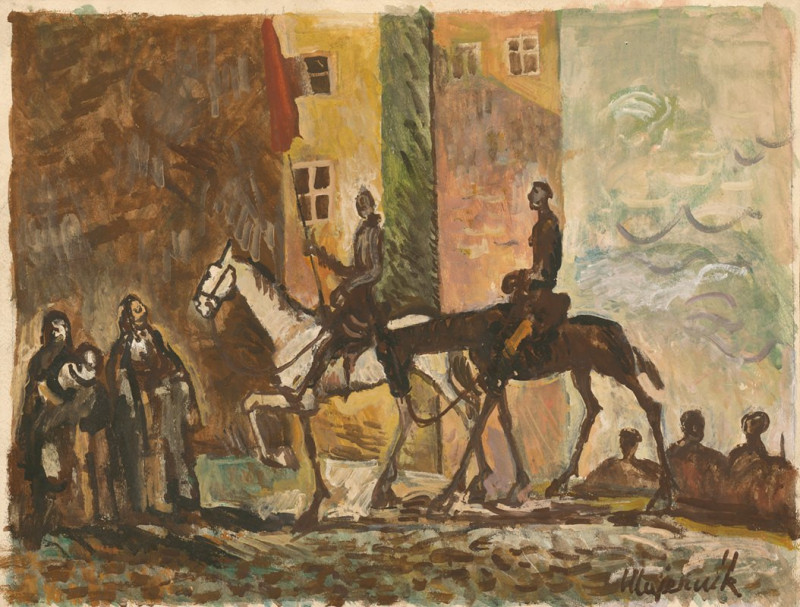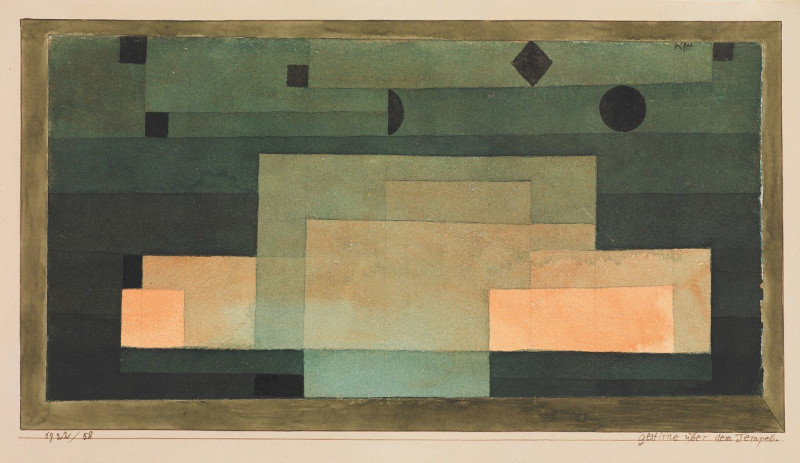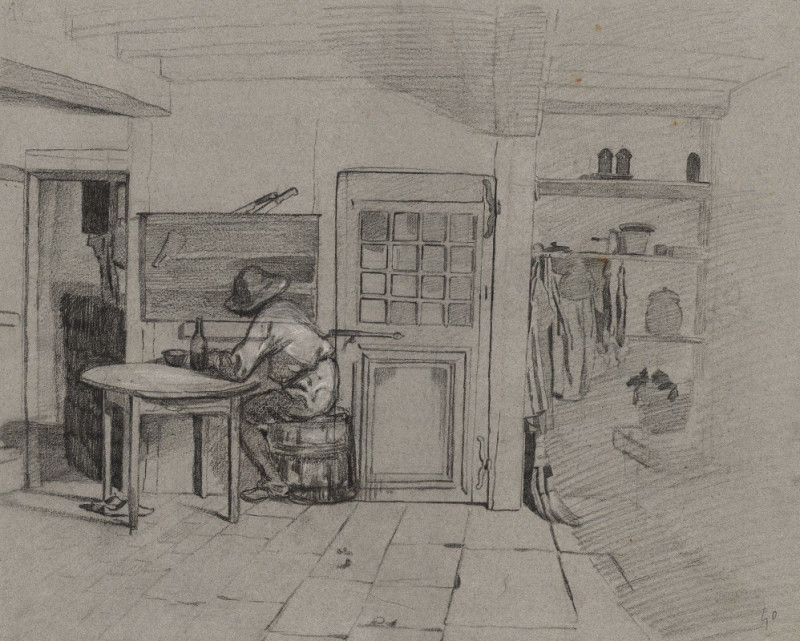A Torrent at Romagnes (after 1862)
Technique: Giclée quality print
Recommended by our customers
More about this artwork
Jean-Baptiste-Camille Corot, a pivotal figure in landscape painting, transports viewers to a tranquil countryside scene in his captivating work titled "A Torrent at Romagnes." Painted after 1862, this masterpiece draws us into a serene landscape, marked by the soft, overcast sky and the gentle lushness of the rural terrain.At the heart of the painting, robust trees anchor the composition, their dark foliage contrasting starkly against the muted sky, creating a dynamic interplay of light and shadow. These majestic trees, with their winding branches and thick canopies, serve as natural guardians overlooking the scene. Below them, a subtle narrative unfolds with figures that appear to traverse the land, adding a human element to the natural setting. Their presence is small yet significant, suggesting the harmonious existence of humanity within the vastness of nature.In the distance, the soft outlines of a village merge seamlessly with the horizon, its buildings just silhouettes against the sky, evoking a sense of tranquility and timelessness. This distant view invites contemplation about the delicate balance between human settlement and the natural world.Corot's expert handling of color and form brings a dreamlike quality to "A Torrent at Romagnes," making it not just a visual experience but an emotional journey. The artist's skillful use of muted earth tones and the subtle gradation of light enhance the painting's atmospheric depth, inviting viewers to pause and reflect on the serene beauty of the natural world.This painting is a testament to Corot's ability to capture the essence of a landscape, making "A Torrent at Romagnes" a perfect reflection of the peaceful, yet ever-changing, qualities of nature.
Delivery
Returns
Jean-Baptiste-Camille Corot was a French landscape and portrait painter as well as a printmaker in etching. He is a pivotal figure in landscape painting and his vast output simultaneously references the Neo-Classical tradition and anticipates the plein-air innovations of Impressionism.

